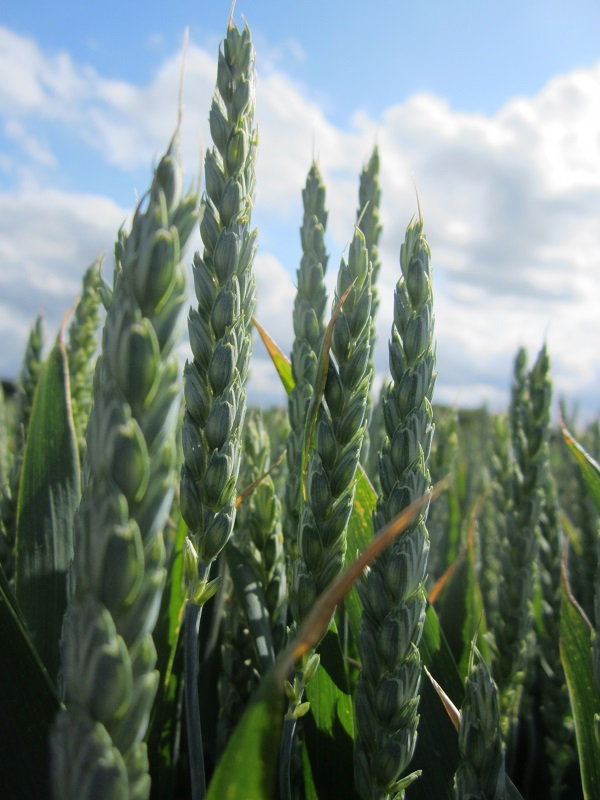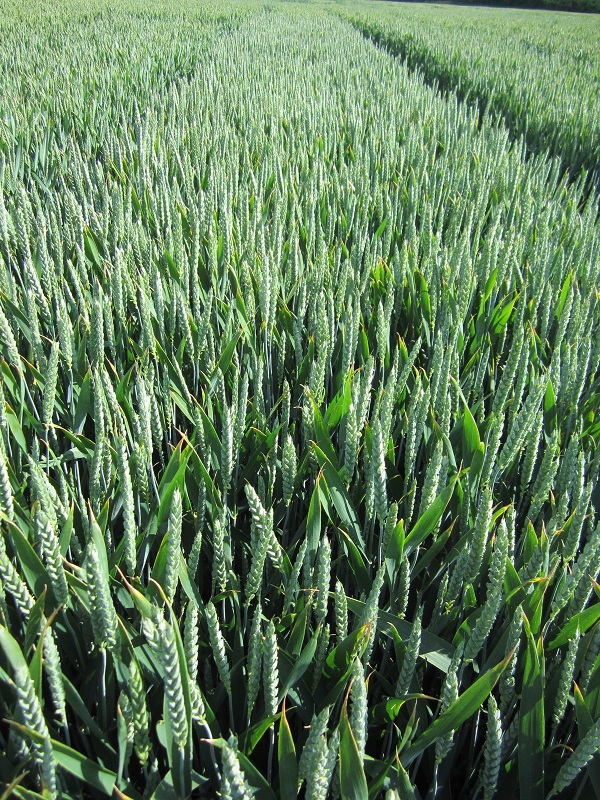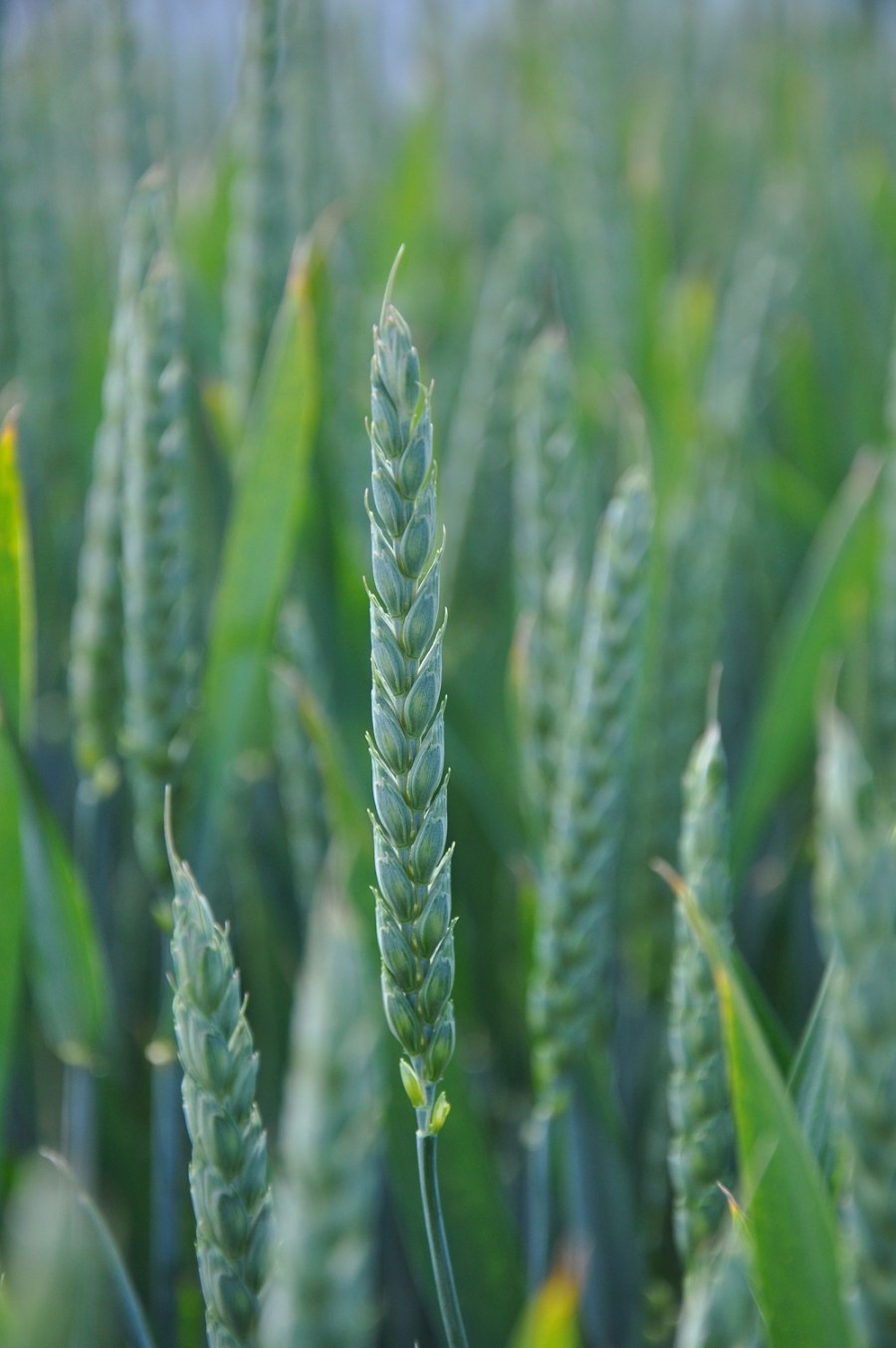Disease resistance is becoming a more prominent and important feature for wheat growers and Syngenta’s variety, Graham, offers a disease package that many may warm to. CPM finds out more.
Having Graham in your armoury will be a bonus.
By Melanie Jenkins
Now in its second year on the AHDB Cereals and Oilseeds Recommended List, Graham has the joint top Septoria tritici score in its category, offering farmers security against the biggest yield-robbing disease in the UK. A hard Group 4 feed wheat from Syngenta, its yield also comes in at 104% of the control across the UK and 106% in the West, offering growers a combined yield and disease advantage.
Despite being new to the table last year, Chris Guest at Gleadell says that Graham was one of the first varieties to sell out. “That’s the sign of a decent variety. It’s a nice all-round package that should do well on farm; even if its out-and-out yield doesn’t put it at the top of the list, as it has lots of useful attributes which will be of interest to growers.”

In the field, Graham looks clean and even with a tapered ear.
In 2016, its first year of commercial availability, Graham proved a popular choice, says Samantha Brooke, seed sales manager at Syngenta. “Graham is a hard-endosperm feed variety that was bred in France – a cross between Premio and Expert.”
The parentage of Graham is quite interesting, adds Barry Barker at Agrii. “Using French parents, Syngenta has introduced new genetics to the UK, whereas a lot of varieties on the RL are crosses from Hereford or Timaru.”
Graham was first recommended in 2016 because it combined good yield and agronomics, including a step forward in septoria resistance. This resistance is the likely reason it performs particularly well in the West, says Simon Oxley, head of the RL at AHDB. “In Scotland, it performs less well, so it’s a variety more suited to England.”

Graham has a score of 6.7 for septoria and a UK yield 104% of treated control.
With a score for septoria of 6.7, Graham also has a good yellow rust score and a high untreated yield, meaning it’s a good all-round package, says Samantha Brooke. The septoria resistance comes from both parents, with a series of genes stacked together to give it a solid package, she points out, meaning it’s a fairly safe variety to grow. In one particular trial, it was difficult to tell the difference between the treated and untreated plots, she adds.
The variety’s septoria resistance really stands out to Barry Barker. “It’s as good as anything out there and in Agrii’s scores, comes out comparable to Crusoe. Having Graham in your armoury will be a bonus, whether in the West or elsewhere in the country.”
Growers have been very keen on this septoria resistance, as it tops its category, says Richard Torr. “Although last year growers got wound up about yellow rust, agronomists still focused on septoria as the key issue – it’s likely to be reinstated as the main disease threat going forward.”
Graham’s yellow rust resistance looks fine to Barry Barker. “It has been an emotional year for a lot of people with yellow rust, but Agrii rates Graham at 8. Brown rust is a potential weakness, scoring 5, but a lot of varieties score around 4, so growers are aware that if brown rust becomes an issue they have to deal with it,” he adds.
“It’s eyespot score looks relatively low on the RL, but there’s limited data and it’s not that crucial – if it’s something growers are worried about they should choose varieties with the Pch1 Rendezvous resistance gene.”
For growers already growing the well established varieties JB Diego or KWS Santiago, Graham is a choice which yields better and has a better disease spectrum, explains Simon Oxley. It also survived the yellow rust issues last year.
On the AHDB Relative Risk graph, which ranks varieties according to disease resistance, lodging and untreated yield, Graham scores in the lower risk quadrant. “Graham performs above average, meaning growers who’ve grown JB Diego should find Graham relatively straightforward.”
In the autumn, the variety has a prostrate growth habit, covering the ground very low, and it’s slow before stem elongation, so is suitable for early drilling, explains Samantha Brooke. “In areas where blackgrass isn’t a problem and farmers want to drill early – before 15 Sept – Graham is especially suited due to its autumn growth habit.”
Barry Barker concurs that Graham is suited to early drilling, but growers with blackgrass issues might not want to do so. “It’s medium to high tillering, meaning seed rates can be reduced accordingly. In terms of grassweed competitiveness, Graham is about average.” On the limited trials data so far, it’s more suited to medium and heavy soils, rather than lighter ones, but more will be learnt after its first commercial year, he says.
According to Chris Guest, heavy land is where Graham is going to perform best. “But it’s likely to do equally well on light land and should be fairly consistent.” Over the four years of trial data, the yield has only varied by four percentage points, suggesting Graham is very consistent, as there are varieties that swing by as much as 10 percentage points, he says.
Once spring arrives, stem elongation is really quick, explains Samantha Brooke. “Graham catches up with and overtakes other varieties. From growth stage 31 onwards, it speeds through – behaving similarly to Gallant in our trials. The feedback we’ve had from growers is that Graham helps to spread the risk and workload.”
She recommends that growers keep an eye on the growth habit of Graham as it may need nitrogen and fungicides at different times to other varieties, as well as remaining aware that at stem elongation, it’s very fast.
As a stiff variety, Graham will need minimal PGR and should only need monitoring and treating as appropriate within a standard disease programme, suggests Barry Barker. “Due to Graham’s resistance, it’s a case of manage as you go – it has a reasonable response to fungicides.”
According to Samantha Brooke, the all-important factor for Graham is its early maturity: As other high yielders take longer to mature, it can help to spread the risk at harvest. It’s the fifth earliest variety on the RL at -1 of control. “In the field, Graham looks clean with a tapered ear – it looks very even, especially when in ear and ripening,” she says.
Graham is similar in maturity to Syngenta’s new hard Group 4 variety, Shabras, and the existing variety Grafton, says Chris Guest. “For those growing a lot of feed wheat, having an early maturing variety is great as it can give a spread of harvest dates and a good entry to oilseed rape.” Even though the area of OSR has fallen, it’s still an important option, he adds.
Looking at its specific weight, this could be higher, warns Barry Barker. “However, as a feed wheat, this isn’t so much of a big issue.” It’s a struggle to find many other things that are wrong with Graham, he adds. “Though some may get hung up the fact it’s not the highest yielder, Graham is right up there in Agrii’s three-year trial data.”
Graham had a very successful introduction to a crowded market of good hard feed wheats, according to Richard Torr, seed sales manager at Wynnstay. “We saw it for the first time last year with our seed growers, who did very well with it.”
In terms of market share, Graham will have taken around 3.5% this year, but next year this could be more like 5% or above, says Chris Guest. “Naturally it will take market share from JB Diego and probably some from Reflection and other older Group 4 material. It has a considerable yield increase on Grafton and Relay, so may take from those too.”
The difficulty this year is that there are a lot of new varieties on the RL, says Chris Guest. “It’ll be an interesting year in terms of seeing what farmers do.” There could be a swing back from Group 1 varieties, but this’ll depend on what prices do in May, June and July and what premiums look like for 2018, he says.
It will inevitably take market share from JB Diego and may take from Evolution, Relay and Dickens, suggests Richard Torr. “It does have better disease resistance and a higher yield than many, in a very crowded market place, so we expect a good solid demand for it. With early maturity and stiff straw, there’s a strong case for having some Graham on the farm – it makes perfect sense for it to be one of two or three varieties that farmers grow. It would be wrong not to consider it as it’s one of the best wheats in terms of overall package.”
Samantha Brooke agrees that Graham is a solid variety to have in the portfolio. “It’s a good all-round feed variety that has decent grain quality and is the first variety since Grafton that can be drilled early and is early to mature.”
The most important factors for farmers are yield, marketability and disease resistance, adds Chris Guest. “Graham is a good all-round, farmer-friendly variety with a lot of positive attributes and its market share is likely to increase.”
Norfolk seed crop pushes yield above farm average
Graham can deliver record-busting farm yields in the East, alongside its strong RL performance in the West, if the experience of seed grower William Runciman is anything to go by.
Farming approximately 200ha at Croxton Farm, Fulmodeston, near Fakenham in Norfolk, he’s grown Graham for seed for the past two seasons, with 24ha each year in the same field. On both occasions, the crop yielded at least10t/ha, as well as producing a good grain sample. Normally he says the farm struggles to push winter wheat above 8.75t/ha.
More impressively, these yields were achieved on fairly light loam, and last year, that was as a second wheat, after drilling in early Oct, and in a season of heavy rain.
“Last year’s weather brought us 180% of our average rainfall, which for other crops was disastrous. So I’m thrilled at 10t/ha,” William Runciman explains.
“We upped the potash a bit, because our indices are inherently low, and I did increase the nitrogen a bit to push yield. But we only used a very light touch of growth regulator. The standing power was absolutely brilliant. It also tillered well and we made a conscious effort to keep as many tillers alive as possible.”
Crops are grown in a four-year rotation, comprising sugar beet, followed by vining peas, potatoes or maize, then two years of winter wheat.
Yellow rust and septoria are normally the main disease concerns. But he found even a standard fungicide programme kept Graham “remarkably clean”.
“Since we started growing Graham we’ve forgotten what disease pressure is. We’ve not had the panics in the season that we used to have. Our agronomist commented that while Graham responds well to a full fungicide programme, it is a flexible variety which allows more time to apply fungicide. It’s been a lot easier to grow.
“I think there was a lot of yellow rust pressure last year, but not in Graham. Also, septoria can be a problem later, but we didn’t have to worry about it. We just sprayed as normal and kept the flag leaf and leaf two clean without much trouble.”
Last year’s Oct drilling date also meant the crop escaped BYDV, while, at the other end of the season, William Runciman capitalised on Graham’s early harvest to get land promptly cleared.
“It seems to produce a lot of medium-sized ears very easily, which we want, rather than a few very big ears. I think that’s where its yield comes from,” he concludes.
Graham at a glance





